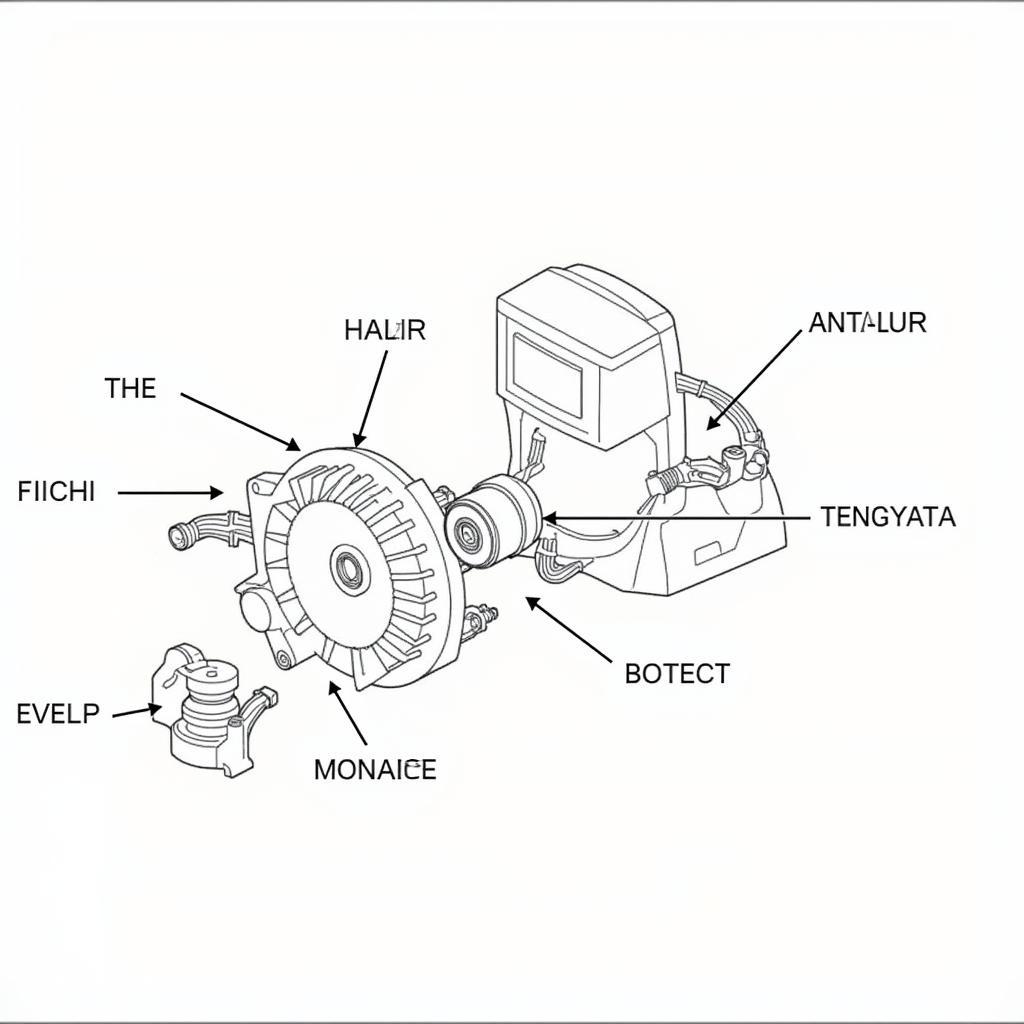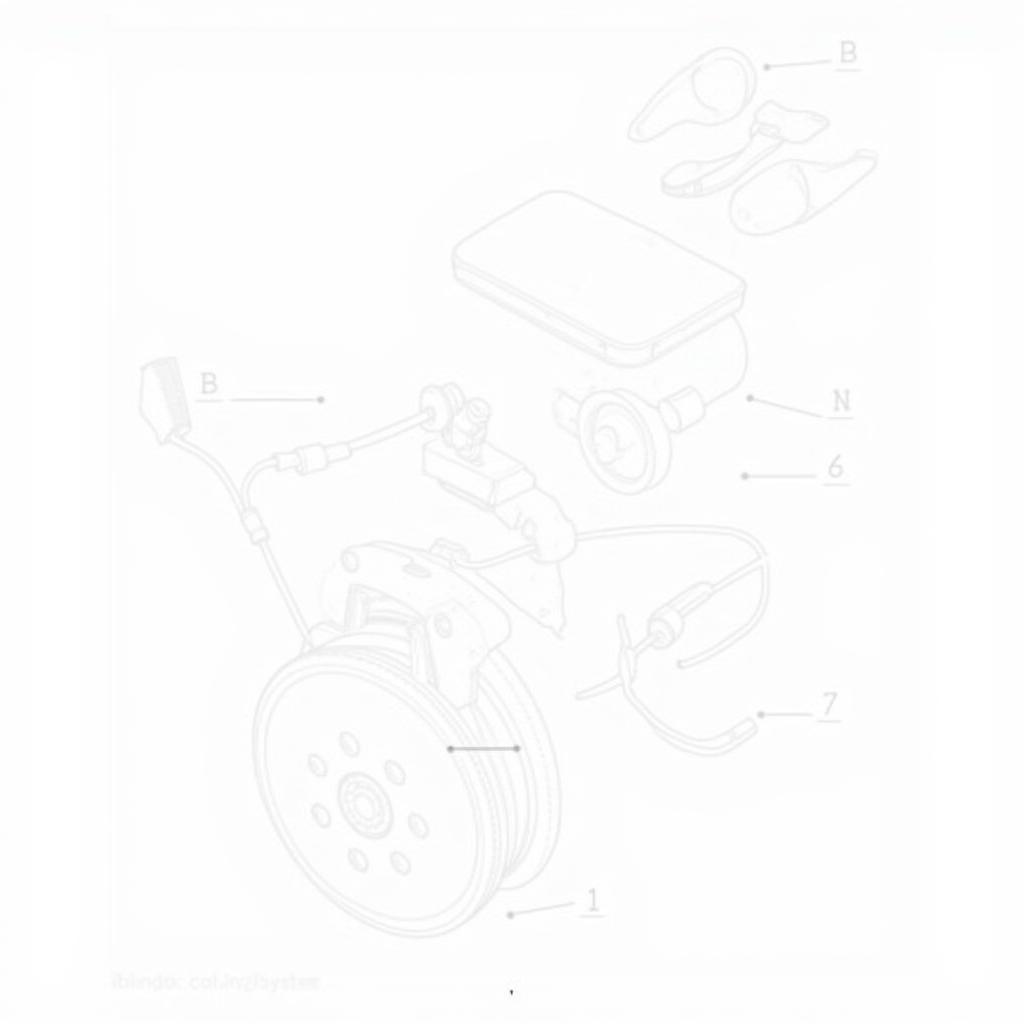A charging system fault in your Range Rover can be a frustrating experience, leaving you stranded and unsure of the next steps. Understanding the intricacies of the charging system and how to diagnose and fix potential issues can save you time and money. This article explores the common causes of charging system faults in Range Rovers, provides diagnostic tips, and outlines solutions, including remote software programming and installation options. normal amperage draw car battery is a good starting point for understanding normal battery function.
Understanding the Range Rover Charging System
The charging system in a Range Rover, like any other vehicle, consists of three primary components: the alternator, the battery, and the voltage regulator. The alternator generates electricity, the battery stores it, and the voltage regulator controls the charging process. A fault in any of these components can lead to a charging system malfunction.
Common Causes of Charging System Faults
Several factors can contribute to charging system problems in Range Rovers. These include:
- Alternator Failure: A failing alternator is a frequent culprit. Signs include dimming headlights, flickering dashboard lights, and a dead battery.
- Battery Problems: A weak or dying battery can also trigger charging system faults. Symptoms can overlap with alternator issues, making diagnosis crucial.
- Voltage Regulator Malfunction: The voltage regulator maintains the correct voltage output from the alternator. A faulty regulator can overcharge or undercharge the battery, leading to damage.
- Wiring Issues: Corroded or loose wiring can disrupt the flow of electricity, causing charging system problems.
- Software Glitches: Modern Range Rovers rely heavily on software. Occasionally, software glitches can affect the charging system.
 Range Rover Charging System Components
Range Rover Charging System Components
Diagnosing a Charging System Fault
Diagnosing a charging system fault requires a systematic approach. Here are some steps you can take:
- Check the Battery Voltage: Use a multimeter to check the battery voltage with the engine off. A healthy battery should read around 12.6 volts.
- Test the Alternator Output: With the engine running, the voltage should increase to between 13.5 and 14.5 volts. A lower reading suggests an alternator problem.
- Inspect the Wiring: Visually inspect the wiring for any signs of damage, corrosion, or loose connections.
- Use Diagnostic Tools: Advanced diagnostic tools can pinpoint the specific cause of the fault, including software issues.
parasitic draw test with amp clamp can be useful for finding hidden battery drains.
Remote Diagnostics and Software Solutions
Modern technology allows for remote diagnostics and software solutions for certain charging system issues. Specialized software can be installed remotely to address software glitches or update the vehicle’s control modules. This can save a trip to the dealership and often resolve the problem quickly.
How to Fix a Range Rover Charging System Fault?
The solution to a charging system fault depends on the specific cause. Here are some common fixes:
- Alternator Replacement: A faulty alternator usually needs replacement.
- Battery Replacement: A weak or dead battery should be replaced.
- Voltage Regulator Replacement: A malfunctioning voltage regulator needs replacement.
- Wiring Repair: Damaged or corroded wiring should be repaired or replaced.
- Software Update/Reprogramming: Software-related issues can often be resolved through remote updates or reprogramming.
“Regular maintenance and timely diagnosis are key to preventing costly repairs down the line,” says John Smith, a certified automotive electrical engineer with over 20 years of experience.
What if the Battery Keeps Draining?
If your Range Rover’s battery keeps draining, even with a new alternator and battery, there might be a parasitic draw. This means something in the electrical system is consuming power even when the vehicle is off. battery drain test with multimeter explains how to identify such drains.
reason for battery drain in car explores different reasons for this issue.
“A parasitic draw can be tricky to find, but with the right tools and knowledge, it’s manageable,” advises Jane Doe, an automotive electrical systems expert.
Conclusion
A charging system fault in your Range Rover can be a complex issue. However, by understanding the system, using proper diagnostic techniques, and considering remote software solutions, you can effectively address these problems. Don’t hesitate to seek professional help if needed. x5 battery drain offers additional information on similar issues in related vehicles. Addressing a charging system fault promptly ensures your Range Rover remains reliable and ready for the road.


